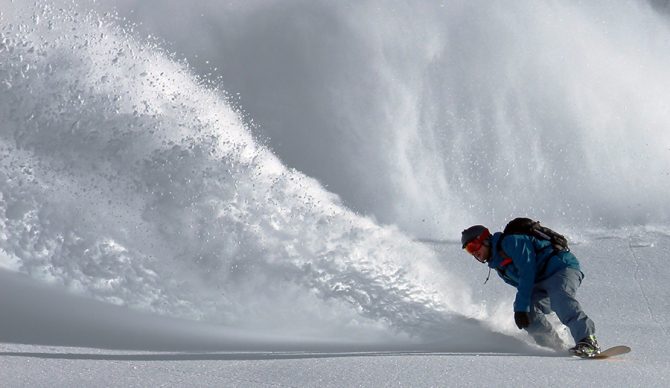
Photo: Johannes Waibel//Unsplash
Every week seems to come with a new winter storm to track in the Sierra Nevada region and we’re now stepping into territory where every week brings some kind of new record. The trend in the past decade has seen a handful of strong starts to the season that tapers off significantly as spring approaches, so when January 1 rolled around this year we were in a wait-and-see pattern. For reference, California had recorded 64 percent of its average April 1 snowpack as 2023 began, which accounted for 174 percent of the average snowpack for the first week of January.
“We were in this exact same spot last year. We were way above average, and then the faucet shut off in January through March,” said Andrew Schwartz at the time, a lead scientist at the UC Berkeley Central Sierra Snow Laboratory near Donner Summit.
Two-and-a-half months later and now we can clearly see the faucet never shut off. According to data from the California Department of Water Resources (CDWR), the Southern Sierras have officially hit a recorded high, currently holding a snowpack 257 percent greater than the annual average by April 1.
“As of this weekend, the Southern Sierra now appears to have (the) largest snowpack in recorded history (as measured by snow water equivalent, or SWE),” wrote Climate Scientist, Daniel Swain. “Not just for the calendar date, but for any date.”
Charts tracking California’s snow water content show that the Central and Southern Sierra are both at historic heights for their annual average at this point. But the entire Sierra Nevada range is well beyond anything we’ve seen in the past decade. The previous record-holding winter was exactly 40 years ago in 1982-83. The Central Sierra has reached 218 percent of its annual average for early March and the northern Sierra now sits at 168 percent its annual average, which now includes insane numbers like 52 feet in the Lake Tahoe area. A big chunk of that number came as February turned to March and Tahoe saw eight feet in seven days. The same storm brought 93 inches to Southern California’s Mountain High, which typically only averages 67 inches in an entire season.
“This has been one bender of a storm cycle,” The Inertia’s Will Sileo wrote in early March. “We’ve seen it all, from sneaky powder afternoons to whiteout conditions, massive blizzards that resulted in bluebird powder mornings, and, seeing as it’s now March, a couple ill-timed days of spring slush as well.”

